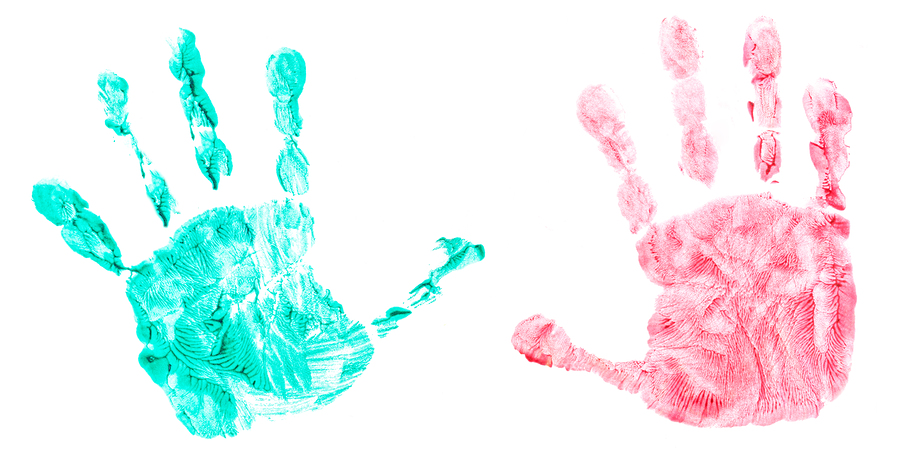
by p.lange/bigstockphoto.com
An ambulance pulls up with siren blaring just outside my office window. I peek outside. An ambulance is stuck in the left lane, trying to get through.
Ambulance driver, to the car in front of him: “Please pull to your right.”
Car pulls further to the left.
Ambulance driver again: “Please pull to your right.”
Car stays put.
Ambulance driver: “That’s your left. Please pull to your right.”
Car finally moves to the right.
Ambulance driver: “There ya go!”
Oh boy. Shows you why it’s so important to know left vs. right, something called “laterality.” So when does that skill come in? Not such an easy answer…
Usually, kids will show a preference for “handedness” by around 18 months of age. Before that, kids should use their right and left hand pretty much equally. If a 6 month old is using her right hand for most things like reaching and putting objects into her mouth, that could be a signal that something is going on neurologically. Before 1 year of age, kids should be exploring and experimenting with both hands, so definitely tell your doc if this isn’t the case. But by 2-3 years of age, it should be pretty clear, though, whether your kid is a righty or a lefty.
When can kids tell the difference between left and right?
Most kids can distinguish left vs right by the time they’re around 5-6 years of age. Don’t worry if your child is still having trouble in 1st grade, but talk with your child’s teacher if he is still having trouble by the time he’s 8 years old. Left-right confusion can be a sign of learning and attention problems and visual processing issues. Trouble telling left vs. right can affect motor, reading, writing, and math skills as kids move up in grade.
What can you do to help your child learn left vs. right?
The first thing is to identify your child’s “handedness” or dominant side. If you’re not sure, you can ask her to put a shell to her ear and pretend to listen to it, and this will be a pretty accurate indicator of which side is dominant.
Once you know which side is dominant, here are 10 fun activities you can do with your child to help him learn his laterality. Focus first on your child’s dominant side. Once he has that down, it’s easy to know what the other side is.
- Start with your child’s dominant side, and point out that she is using that side. You might point out that “You use your spoon with your left hand,” or “You write with your right hand.”
- Once you’ve reinforced whether your child’s dominant hand is left or right, you can put a stamp or tattoo on the back of that hand to help him remember, or have him wear a special bracelet on their dominant wrist.
- Do the Hokey Pokey and exaggerate which side of the body is being put in.
- Play other fun games like Simon Says or Twister to reinforce left vs. right.
- Always start dressing with her dominant side. “Put your right arm into your sleeve first,” or “Put your left leg into your pants first.”
- Once your child can recognize his name, write his name on a piece of painter’s tape and cut it in half. Put the first half of his name in his left shoe and the last half in his right shoe. His shoes will be on correctly when his name is in the right order. If your child doesn’t recognize his name yet, try drawing a picture like a rainbow and putting the left half in his left shoe and right half in his right shoe.
- When you hold hands to cross the street, always hold her dominant hand and say “Give me your right hand.”
- When you’re listening to your handy dandy nav system, reinforce right and left when your phone or car tells you to “turn right in 300 yards.”
- If your child has a super cute distinguishing body feature like my daughter’s beauty mark on the back of her left wrist, you can reinforce which side that cute little feature is on.
- Play sorting games where your child has to place objects of one type on his left side, and objects of another type on his right side.
OK, so what about having your child hold up her hands in front of her, with fingers pointing up and thumbs pointing toward the middle so that the left hand looks like it’s making the letter “L”? Well, works great if your kid is recognizing her letters and doesn’t have letter reversal problems. If so, then this is a fantastic #11 for you!
Do you have any other tips to teach your kid left vs. right? Would love to hear them below!
Leave a Reply